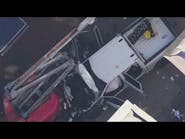WA Department Tweaks Non-Urgent EMS
By Allison Needles
Source Puyallup Herald (Puyallup, Wash.)
Sept. 11 -- The type of incident is common enough — someone with Alzheimer’s has gone missing. A 911 call is made. The fire department responds.
It happened recently to Central Pierce Fire & Rescue.
“A gentleman was lost. He wandered off from the building he was at,” EMS Capt. Tim Lookabaugh said. “(Crews) spent an hour and a half trying to get a hold of his family, finding the right place for him to go.”
Is it an emergency? Absolutely, the department says. But perhaps a low-acuity one.
That’s why Central Pierce is launching a Low-Acuity Emergency Response Pilot Program. It will consist of two units on the east and west side of the department’s service area — likely one at Station 61 in Parkland and Station 66 in South Hill, where most low-acuity calls are generated. Each unit will staff two emergency responders who are capable of dealing with medical emergencies.
According to Annals of Emergency Dispatch and Response, low-acuity calls are calls related to non-urgent medical conditions and symptoms.
Those conditions range from experiencing flu-like symptoms, diabetic issues, checking blood pressure, falls (depending on age and medication) and minor cuts, among other things.
Central Pierce staff say they see quite a few of these calls — enough to where it affects response times, which average 6-7 minutes. Out of the agency’s 25,000-28,000 calls per year, about 10 percent are considered low-acuity calls.
About 30 percent of the time, the engines or medic units responding to a call are not the units closest to the emergency, Lookabaugh said. When that happens, the next closest unit responds, but it’s coming from farther away.
“That could mean life or death,” Lookabaugh said. “When minutes matter, they say.”
Tacoma is the only other city in Pierce County that addresses low-acuity calls.
For those worried about how it’ll affect their emergency, Capt. Darrin Shaw said rest assured, all calls will still be taken, and help will come, but the type of help will differ.
“The ultimate goal is to have the right unit for the right emergency,” Shaw said.
“We’re just saying this issue could wait just a little bit longer — it’s not that we’re not going to come,” added Lookabaugh.
Central Pierce officials still are working out whether vehicles for the low-acuity program will be SUVs or something more akin to the department’s medic units, so the cost of standing up the low-acuity unit is unclear. It costs the department about $1.8 million annually to run a medic unit 24-7, but officials anticipate the low-acuity units would cost significantly less due to limited hours.
Currently, Central Pierce doesn’t have precise data when it comes to the exact number of low-acuity calls, mostly because there’s no low-acuity program yet. Dispatched calls to Central Pierce typically are sorted into Basic Life Support (BLS) calls and Advanced Life Support (ALS) calls. Low-acuity calls would typically fall into the BLS category. ALS calls are more life-threatening, like a heart-attack victim who needs immediate care.
“This (program) will be a new way to get really good data for ALS, BLS and low-acuity emergencies,” Shaw said. “So a year from now, we’ll be able to say X amount of calls are low-acuity.”
The department also will know how long low-acuity units were in service and how many hours it saved medic and engine units for higher-priority calls.
EMS assistant chief Dan Beckman expects the program to be permanent, but the first year will work out the kinks of what exactly a low-acuity profile will look like.
The program is expected to start early 2019. New crew members have already hired for the job and are training at the academy.
___ (c)2018 the Puyallup Herald (Puyallup, Wash.) Visit the Puyallup Herald (Puyallup, Wash.) at www.thenewstribune.com/puyallup Distributed by Tribune Content Agency, LLC.






